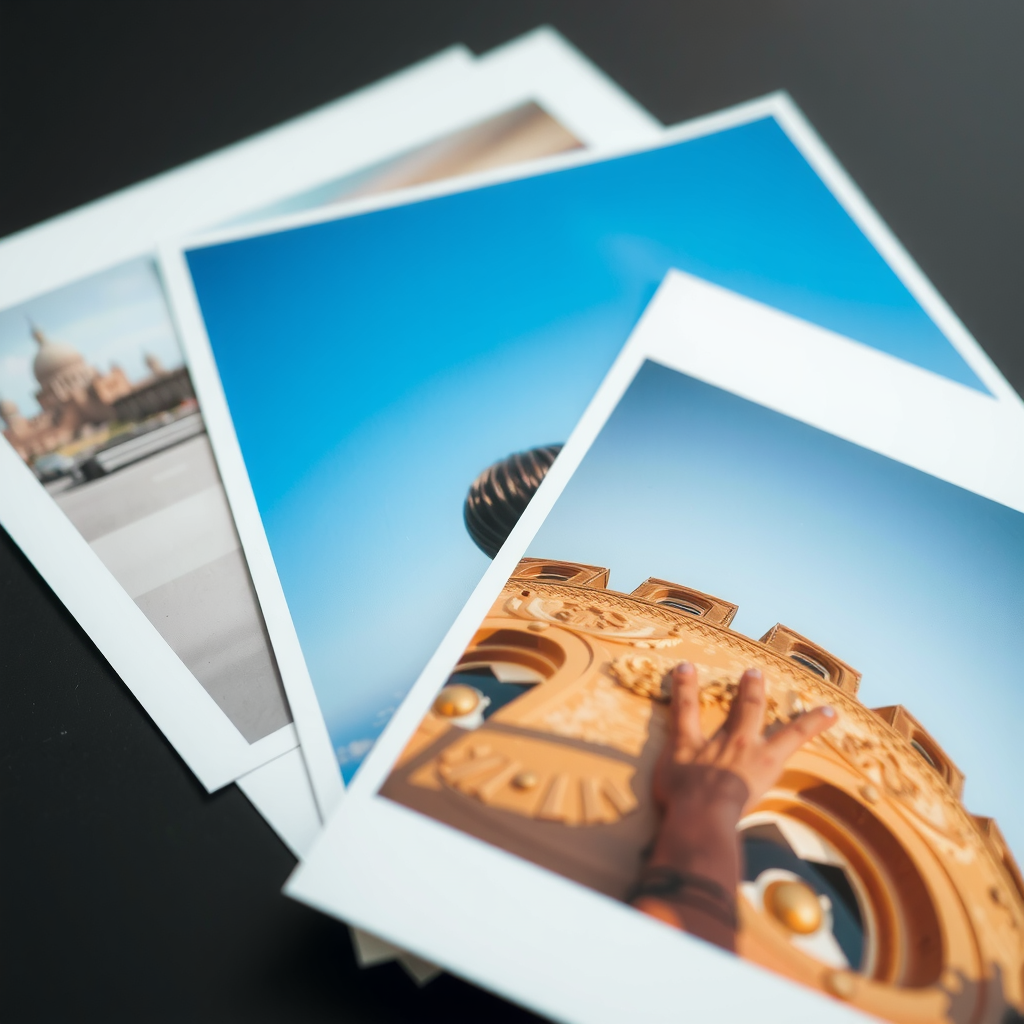Types of Printing Paper: A Comparison of Texture, Quality and Use Cases
When choosing the right type of paper for printing, it’s essential to understand how different finishes, weights, and textures affect the outcome. Based on a curated selection of paper types that I personally use for my poster projects, this article explores their characteristics and best use cases. My choice of paper often varies depending on the artwork I create and, for custom orders, the client’s preferences.
1. Traditional Photo Paper (Glossy, 300 g/m²)
This paper type is ideal for vibrant and colorful prints. Its glossy finish enhances the richness of colors and adds a professional touch to images. However, its reflective surface can cause glare under certain lighting conditions.
Characteristics:
• Finish: Glossy
• Weight: 300 g/m²
• Best For: Photographic prints, posters, and presentations with detailed visuals.
It’s perfect for promotional posters or artworks meant to grab attention.
2. Premium Glossy Photo Paper (255 g/m²)
Slightly heavier and more refined than traditional glossy paper, this option adds depth and sharpness to images. It’s ideal for professional-quality photography and artwork prints.
Characteristics:
• Finish: Glossy with a premium touch
• Weight: 255 g/m²
• Best For: High-end photographic prints and marketing materials.
This paper is for creating bold, high-impact visuals. It delivers exceptional color accuracy, which is crucial for intricate designs or artwork.
3. Premium Luster Photo Paper (260 g/m²)
With a semi-gloss or luster finish, this paper offers a middle ground between matte and glossy. It reduces glare while maintaining color vibrancy, making it suitable for displays in bright spaces.
Characteristics:
• Finish: Semi-gloss (Luster)
• Weight: 260 g/m²
• Best For: Posters and photos displayed under varying light conditions.
I use luster paper for pieces that need to balance elegance with practicality. It’s an excellent choice for client projects requiring premium quality but without the heavy glare of glossy paper.
4. Enhanced Matte Paper (192 g/m²)
Matte paper provides a smooth, non-reflective finish, ideal for detailed designs where readability is critical. It’s lightweight yet maintains quality, making it a cost-effective option for professional-looking prints.
Characteristics:
• Finish: Matte
• Weight: 192 g/m²
• Best For: Posters, charts, and prints meant for indoor displays.
I use it for text-heavy designs or minimalist artwork, this is a reliable option. Its matte finish also makes it suitable for pieces where subtlety is key.
5. Fine Art Cotton Smooth Paper (Bright 300 g/m²)
This heavyweight paper features a smooth surface and is crafted from cotton, offering a luxurious feel. It is perfect for fine art reproductions and high-end projects requiring precise detail and vibrant colors.
Characteristics:
• Finish: Smooth and luxurious
• Weight: 300 g/m²
• Best For: Art prints, gallery displays, and high-quality posters.
This paper is my preferred choice for reproducing fine art. Its smooth texture and premium feel enhance the depth and quality of my work, making it a favorite for gallery pieces.
6. Fine Art Cotton Textured Paper (Natural, 300 g/m²)
This paper combines durability and a unique texture, making it ideal for artistic and creative prints. The natural cotton base ensures archival quality, preserving artwork and photography over time.
Characteristics:
• Finish: Textured
• Weight: 300 g/m²
• Best For: Artistic prints, professional photography, and collectible posters.
I use it for projects that call for a traditional or vintage feel, I often turn to this textured paper. It adds character and authenticity to the artwork, making it a popular choice for custom orders.
How I Choose the Right Paper
As an artist, the paper I use is as important as the design itself. Each type of paper in this selection has its unique qualities, and my choice depends on a few key factors:
1. The Artwork: Certain designs look better on specific paper types. For example, bold, colorful posters work best on glossy or luster paper, while textured or matte finishes enhance fine art reproductions.
2. Client Preferences: For custom orders, I consult with clients to understand their vision and recommend the best paper type to match their desired aesthetic.
3. Use Case: Whether the poster is for indoor display, gallery use, or promotional purposes also influences my decision.
The paper you choose can dramatically impact how your artwork is perceived. From the smooth luxury of Fine Art Cotton Paper to the high-impact vibrancy of Premium Glossy finishes, each type serves a unique purpose. By tailoring the paper to both the design and the client’s needs, I ensure that every poster not only meets but exceeds expectations.
Whether you’re an artist or a client, understanding these options will help you make informed decisions and create truly memorable pieces.


